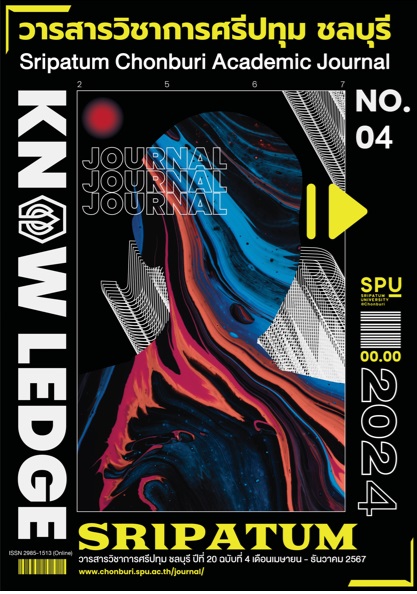THE DEVELOPMENT DOMESTIV TERMINALS OF LAEMCHABANG PORT PHASE 3
Keywords:
Domestic Cargo Ports, Laemchabang Port Phase 3Abstract
The objectives of this research were to study 1) problems, obstacles, and factors affecting the development of domestic cargo ports, and 2) guidelines for developing domestic cargo ports, which supported the transportation of goods by coastal ships and transport ships in the Laemchabang Port Phase 3 areas. The analysis of internal factors and external factors (SWOT Analysis) were conducted. Data were obtained from executives and operators involved in port operation who answered an open-ended questionnaire, 3 of whom were specifically selected and 15 of whom were selected by a 5-level rating scale type. The opinions obtained from the open-ended questionnaires concerning the current domestic freight transport situation and development of a domestic cargo terminal in the Laem Chabang Port Phase 3 areas were then analyzed. The statistics used in data analysis included mean and standard deviation.
It was found that the rating level of service users on all 4 factors, namely, the factor of wharf services, factors in the operation of cargo lifting tools, product operations factors, and financial and other factors, were at a high level of 4.10, 4.00, 4.03 and 3.71, respectively. Strengths and opportunities included having infrastructure and back-port areas that could be linked with multimodal transport to transport goods to various destinations within the country. Weak points and obstacles included rules, regulations and rules of the Port Authority of Thailand that were not conducive to a competitive business environment. These made it impossible to create business alliances. Besides, the current burden rates that have not yet been changed to the burden rate structure according to the Cabinet announcement in 1991 and the information technology system could not connect to private operators. As a result, the data could not be used to manage and solve various problems effectively.
References
ท่าเรือแหลมฉบัง การท่าเรือแห่งประเทศไทย. (2534, 21 มกราคม). ประกาศท่าเรือแหลมฉบัง การท่าเรือแห่งประเทศไทย เรื่อง อัตราค่าภาระ.
ธีระ กุลสวัสดิ์. (2558). การหาคุณภาพของเครื่องมือในการวิจัย. การจัดการความรู้ คณะรัฐศาสตร์ และนิติศาสตร์ มหาวิทยาลัยบูรพา.
นงนภัส เจียมเงิน. (2558). การบริหารจัดการเพื่อการพัฒนาท่าเทียบเรือชายฝั่งของท่าเรือกรุงเทพ. วิทยานิพนธ์การจัดการมหาบัณฑิต สาขาวิชาการจัดการการบิน, สถาบันการบินพลเรือน สถาบันสมทบมหาวิทยาลัยเทคโนโลยีสุรนารี.
บุรินทร์ รุจจนพันธุ์. (2566). การแปลเกณฑ์ความหมาย (ออนไลน์). เข้าถึงได้จาก: www.thaiall.com/blog/burin/4967/ [2566, 1 มิถุนายน].
ปรียา มีบุญ และพงษ์ชัย อธิคมรัตนกุล. (2561). การพัฒนาระบบขนส่งชายฝั่งในอ่าวไทย โดยเทคนิคเดลฟาย. วารสารพัฒนบริหารศาสตร์, 58(3), หน้า 198-219.
อาภาพร ตั้งภักดีตระกูล. (2559). การศึกษาความสัมพันธ์ของความพร้อมต่อการเปลี่ยนแปลงพฤติกรรมการเป็นสมาชิกที่ดีในองค์การและพฤติกรรมต่อต้านการปฏิบัติงาน โดยมีทุนทางจิตวิทยาเป็นตัวแปรกำกับ. วารสารวิชาการมนุษยศาสตร์และสังคมศาสตร์ มหาวิทยาลัยบูรพา, 25(48), หน้า 295-315.
Downloads
Published
Issue
Section
License
Copyright (c) 2024 Sripatum Chonburi Academic Journal

This work is licensed under a Creative Commons Attribution-NonCommercial-NoDerivatives 4.0 International License.
บทความทุกบทความเป็นลิขสิทธิ์ของวารสารวิชาการศรีปทุม ชลบุรี



